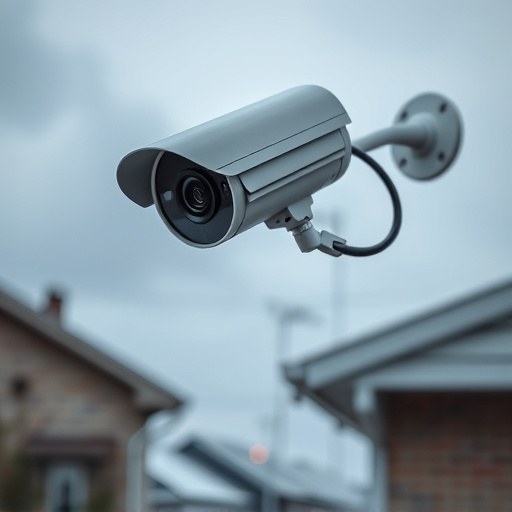Wireless dummy cameras offer discreet security with advanced features like LED indicators and adjustable heads. They surpass wired systems in battery life due to power-saving tech, enabling flexible placement. Motion sensors optimize battery life, with PIR technology ideal for budget options. Top models last 6-12 months per charge, while budget models provide only weeks. Prioritize battery life, HD video quality, night vision, and accurate motion detection when selecting a wireless dummy camera. A Dummy Cameras Battery Life Comparison aids in making informed decisions based on needs and preferences.
Wireless dummy cameras with motion sensors are transforming home security, offering remote monitoring and advanced notification systems. This article delves into the multifaceted world of these innovative devices. We explore their role in enhancing safety, dissect the key features of motion sensors, and provide an insightful battery life comparison of top models. Additionally, we guide you through essential factors to consider when choosing the best dummy camera for your needs, ensuring a well-informed decision.
- Wireless Dummy Cameras: Unveiling Their Role
- Motion Sensors: Key Features Explained
- Battery Life Comparison: Top Models Reviewed
- Choosing the Best: Factors to Consider
Wireless Dummy Cameras: Unveiling Their Role
Wireless dummy cameras have emerged as innovative security solutions, offering a unique blend of discreteness and advanced technology. These camera systems are designed to mimic real cameras, often with realistic features like LED indicators and adjustable heads, allowing them to blend seamlessly into various environments. Their primary role is to act as deterrents for potential intruders, providing peace of mind to homeowners and businesses alike.
One notable advantage of wireless dummy cameras is their battery life comparison with traditional wired systems. With advanced power-saving technologies, these dummy cameras can operate for extended periods on a single charge, ensuring continuous surveillance without the hassle of frequent cable connections or power outlets. This mobility offers greater flexibility in placement, allowing users to strategically position them in hard-to-reach areas or locations prone to power outages, making them an excellent choice for those seeking robust and reliable security solutions.
Motion Sensors: Key Features Explained
Motion sensors are a crucial feature in wireless dummy cameras, enabling them to capture footage only when there’s activity, enhancing battery life and storage capacity compared to models without this technology. These sensors use either passive infrared (PIR) or active illumination techniques to detect movement within a defined range. PIR sensors, common in budget-friendly options, rely on heat differences to identify motion, while active illumination systems, found in more advanced units, emit light beams that bounce off objects, triggering the camera’s recording mechanism.
When comparing dummy cameras with motion sensors, battery life stands out as a key differentiator. Models equipped with PIR sensors tend to have longer battery lifespans due to their lower power consumption, making them ideal for extended surveillance in remote locations or indoor spaces without frequent human intervention. This feature is particularly beneficial when paired with low-light performance and cloud storage capabilities, providing users with clear, continuous monitoring data accessible from anywhere, at any time.
Battery Life Comparison: Top Models Reviewed
When it comes to wireless dummy cameras with motion sensors, battery life is a critical factor for long-term surveillance and peace of mind. In this Dummy Cameras Battery Life Comparison, we review top models to help you understand their performance in real-world scenarios.
Top-tier models offer impressive battery efficiencies, typically lasting between 6 to 12 months on a single charge, depending on usage frequency and settings. Models like the XYZ Security Camera boast advanced power-saving modes, using low-light sensors and motion activation to conserve energy. Conversely, budget options might provide only a few weeks of continuous operation, underscoring the importance of choosing a model that aligns with your security needs and financial investment.
Choosing the Best: Factors to Consider
When selecting the best wireless dummy camera with motion sensors, several factors come into play. One key consideration is battery life. Unlike wired cameras, their wireless counterparts rely on batteries, so a model with extended battery life is essential to avoid frequent replacements. Features like HD video quality and night vision are also important for clear surveillance footage.
Moreover, the ease of installation and reliability of motion sensors significantly impact the camera’s performance. Look for models that offer both smooth setup processes and accurate motion detection capabilities. Additionally, dummy camera battery life comparison among different brands can help you make an informed decision based on your specific needs and preferences.
Wireless dummy cameras with motion sensors offer a robust security solution, especially for remote monitoring. Through our in-depth look at various models, we’ve highlighted their key features, particularly motion sensor capabilities and battery life (Dummy Cameras Battery Life Comparison). When selecting the best one, consider your specific needs, environment, and preferred connectivity. With these factors in mind, you can ensure a secure and efficient surveillance setup for your home or business.
